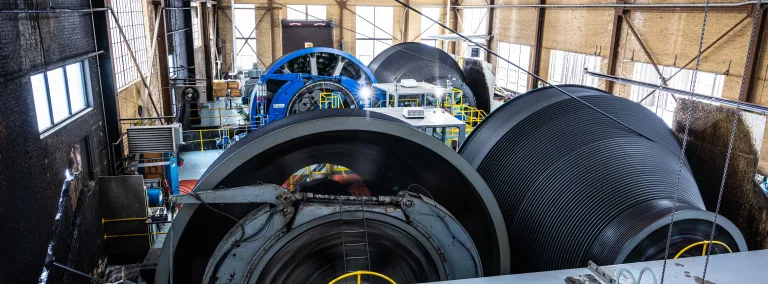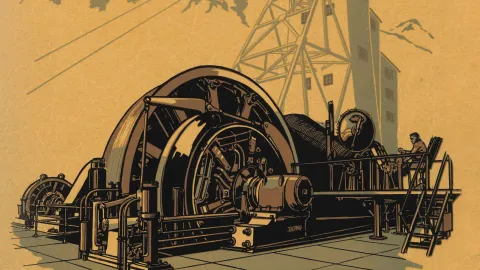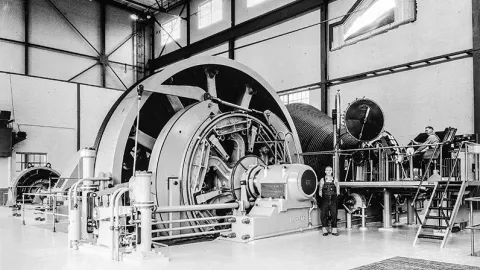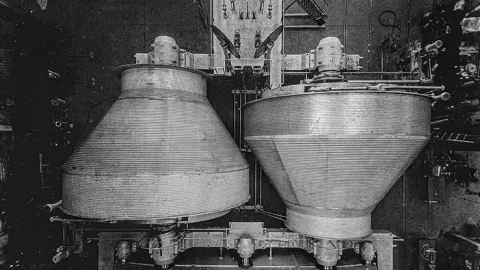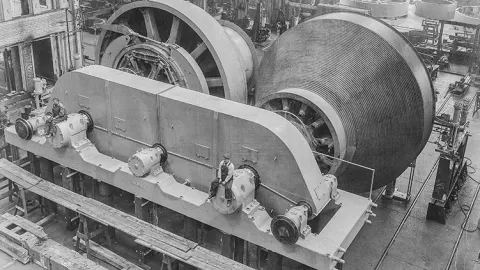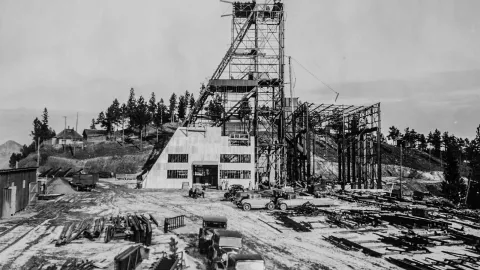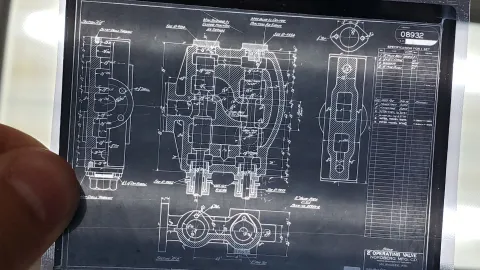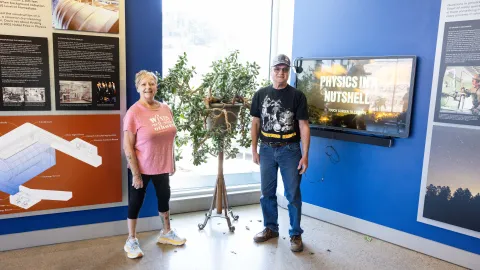SURF workhorses celebrate 90 years of service to the deep underground
The Ross Hoists turn 90 this year.
The sprawling footprint of the Sanford Underground Research Facility (SURF) is comprised of a highly unique mix of 19th and 20th-century technology that runs in harmony with some of the most cutting-edge scientific equipment the 21st century has to offer. This means everything from mining timbers that were put in when horses were the main form of transportation to world-leading dark matter detectors that are is probing some of the most profound mysteries of the universe.
The hoists that transport personnel and equipment between the surface and the depths of the facility are the beating heart of everything at SURF.
The Ross Hoists, at the top of Mill Street in Lead, have been in operation since Franklin D. Roosevelt began his first term. This year, they turned 90.
“They were really built for reliability. They were over engineered, so even today, we have very few issues mechanically with these machines. They just run,” said Colton Clark the Hoists and Maintenance Superintendent at SURF.
A history of the double drum Ross Hoists is detailed in this 2021 article, written by Erin Woodward and published by SURF. For Clark, these machines epitomize the old cliché, “they don’t build them like they used to.”
“It’s really incredible being 90 years old they are super sound mechanically. They're amazing pieces of machinery. When we did the electrical upgrades in 2021, we did a whole evaluation of the hoists. They needed the electrical modernization and instrumentation, but mechanically they didn't need anything,” said Clark.
Part of the reason these machines are in such good shape is thanks to the hard work of mechanics, engineers, and hoist operators who have meticulously cared for them over the decades. One of those people is Laurie Adkins-Heydon, she started as a hoist operator at Homestake in 1991.
“When I first got hired back then and I walked into the huge hoist room and they told me what my job was going to be—I know my mouth hit the floor,” Adkins-Heydon said. “But I was fortunate to be trained by some of the best operators Homestake ever had and this job became a very important part of my life.”
Adkins-Heydon was among the first hoist operators to be hired back when the facility reopened as a laboratory in 2007. She says everyone working in the hoistroom developed a sort of 6th sense that allowed them to operate safely and keep the machines in top working condition.
“You’d hear one little noise and you usually had a pretty good idea of where to look first. If we didn’t, we’d mention it to our mechanics and they could pin-point it very quickly,” Adkins-Heydon said.
Adkins-Heydon recently retired after nearly 30 years in the hoist operator’s chair. Donald Daywitt—is another recently retired hoist operator who also spent close to three decades as a hoist operator for both Homestake and SURF. He marvels at the 20th-century ingenuity embodied in the Ross Hoists.
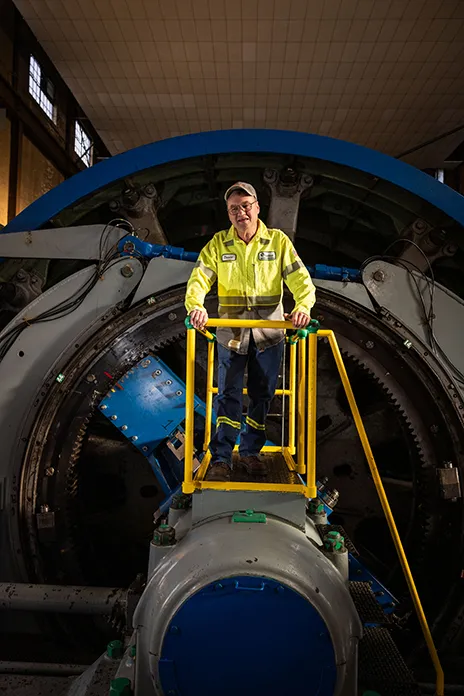
Donald Daywitt stands in the Ross Hoistroom near one of the large tapered drums that make up the Ross Hoist. Daywitt recently retired after spending nearly 30 years as a hoist operator for both Homestake and SURF.
Photo by Stephen Kenny
“Just to think what these people did back in the 1930s with a paper and a pencil. No computers, no cell phones, or any of that stuff. The tolerances on these hoists are just perfect to this day, they work as well now as they did when I started at Homestake. It’s a real testament to the work of the people that built these machines,” says Daywitt.
The people who built these hoists worked for Nordberg Manufacturers in Milwaukee, Wisconsin, Norberg was eventually bought out by Siemag Tecberg, Inc. Wendy Straub, Director of Hoists and Shafts at SURF, says today the company remains a vital resource in maintaining the Ross Hoists.
“Siemag Tecberg was our partner in the upgrade to the Ross Hoists. They are really a wonderful resource for anything that we do hoist-related. They are available 24/7 when we call them on the phone,” Straub said. “We're even doing a little bit of research and development with the company on improved communication systems in the shaft. So together, we are constantly tweaking or trying to make things better for the hoists themselves, for our operators, and for the safety of our workforce.”
The Ross Hoists spent their first 70 years of life extracting gold from the depths to the surface; they will spend the rest of their lives hauling scientists, technicians, and engineers at SURF focused on the extraction of knowledge from these same depths.
“There's no doubt in my mind that we're only going to get better and better for many decades to come,” Straub said. “Yes, and we can operate these hoists as long as the lab is open,” Clark adds. “We maintain our equipment the way it needs to be maintained, we keep everything clean, so there is no reason to think we can’t keep these hoists operating for another 90 years.”
